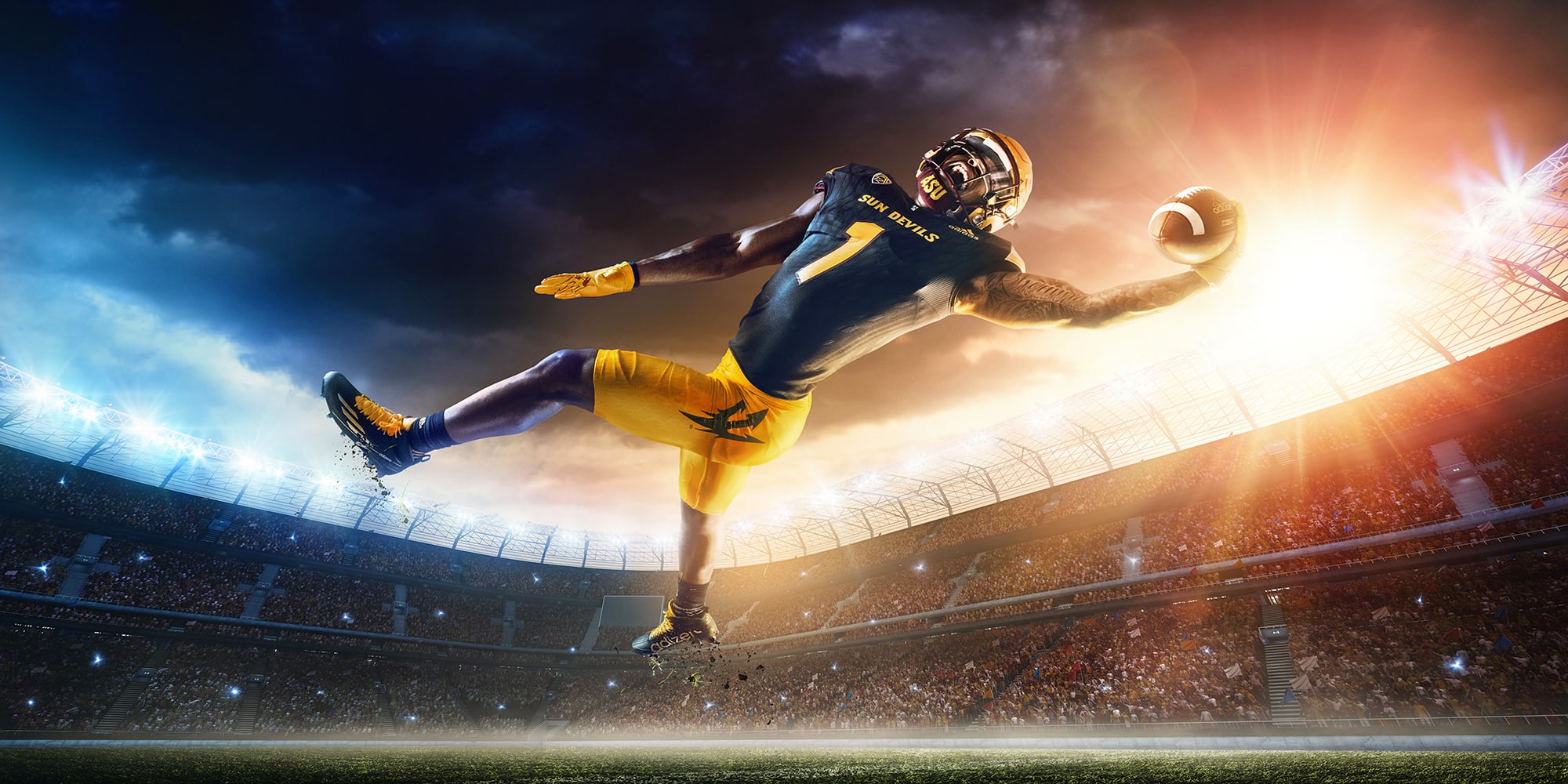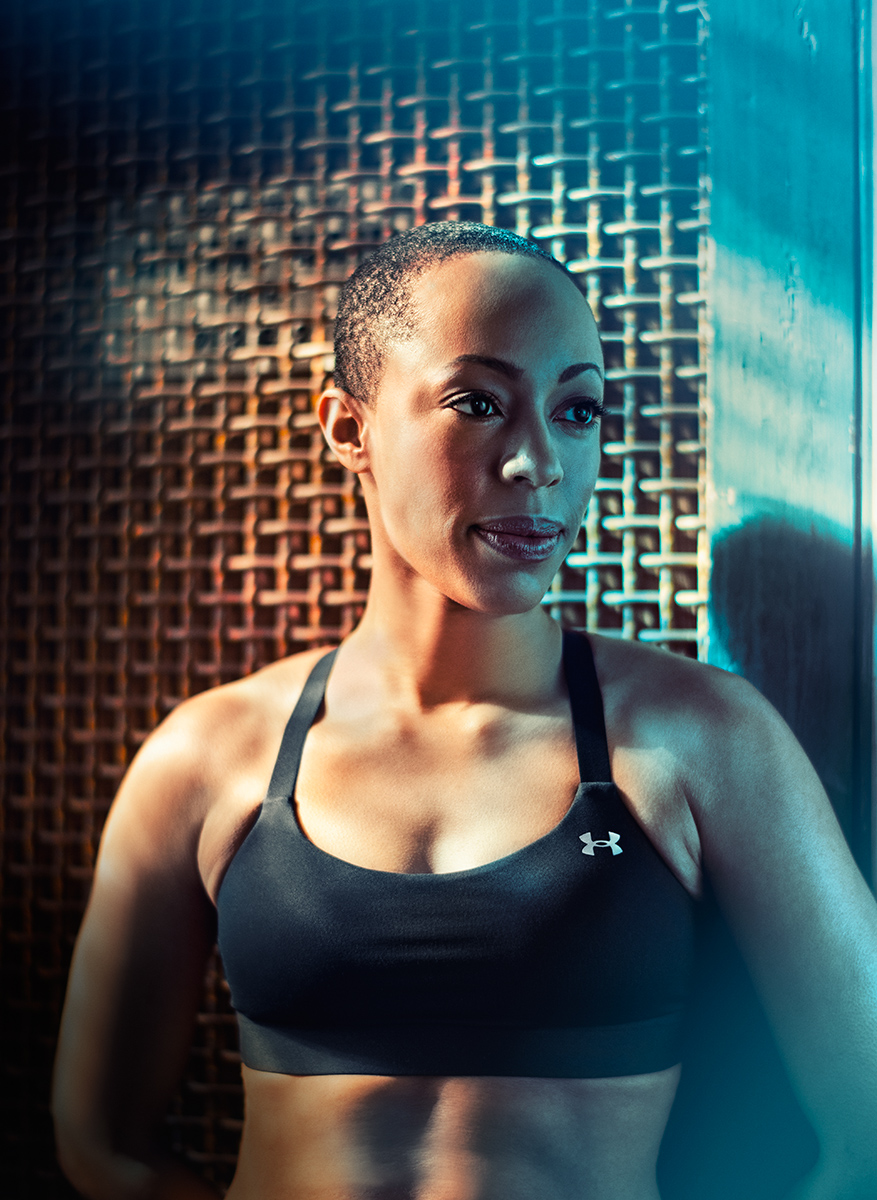Being a Phoenix Commercial Photographer has its ups and downs. The main downside is that the winter is crazy busy and by the time you want to write a blog, you are in the summer when everyone is on vacation. However, after the recent sunglasses article, I got a ton of emails and DM’s asking how I lit the series. So while on the road for a recent photoshoot, I took some time at my AirBNB and wrote out how I approach split color lighting (while watching Ghosterbusters : Afterlife of course).
Split color lighting is an approach where you approach a subject’s form with color in you tonal ranges. For some subjects you will determine off the color temperature of the key light, while with other shots you use complimentary colors altogether and don’t worry about the skin tone at all. The easiest approach to split color lighting usually has a three light setup with a key, and two kickers that receive the color gels. Think of it as a beginners guide to color theory in lighting, for your key can stay neutral and you can essentially go with any color you want for the other two lights.
As the depth of your lighting grows, you will want to g o with more lights and gels to create the same feeling for the shot. However, you will need to make sure that the overall color palette remains balanced. The way that I approach this is easier to describe in steps:
o with more lights and gels to create the same feeling for the shot. However, you will need to make sure that the overall color palette remains balanced. The way that I approach this is easier to describe in steps:
1: Dial in the skin tone of your subject, knowing that all skin reflects light differently. Darker skin is a lot easier to light as the dynamic range (especially if the subject is sweating) is larger and creates more data to be captured by the sensor..
2: Find what parts of their body will be hit by the lights that have gels on them. Make sure that where there is crossover in lights, there is not distracting color combinations. The place where this is usually trickiest is from lights that are behind the subject and pointed slightly towards camera. You may find that one of the lights tries to sneak its way onto your subject’s nose. A good way to mitigate this is to flag the lights around that portion of their face.
3: Determine what, if any, of your background will be impacted by the color cast from the lights. For people, this usually isn’t too difficult, but for automotive photography this can get tricky. Getting chrome to be color neutral and look natural at the same time is very difficult.
4: Dial your lights in with a light meter first. Yes, a light meter is still brutally important for getting the ratio of your scene to fit within the sweetspot of your sensor.
5: Finally, add the gels to your lights after setting the direct Kelvin in camera. Split color lighting with Auto White Balance on is a recipe for disaster… and frustration.
Like everything in photography, dialing in a split color lighting schemata takes practice. Also, know that not every cool light/color ratio will fit your subject. In order to produce an ad campaign with it, you will need to make sure your complete crew knows your approach. This way your wardrobe stylist won’t dress the subject in conflicting colors or patterns that will make life hard for you in post production. Another detail to think about is how you will approach your subject’s hair for the piece you are creating. If there is little copy or post production to the shot, you can be pretty loose with the movement and hair. However, if you are going to split light and have movement that needs adjustment, plan to paint every hair, or minimize the motion.
In many ways it helps to approach a photoshoot with a split-lighting scenario like you would a video production. With stills, we have a little more of a safety net to catch us if our lighting isn’t dialed in perfectly. However, with cinema shoots, you really have to have things close to perfect, as going back frame by frame and correcting details is tedious at best. With boldly saturated color on your subject, the decision to change a final look of an image requires going into Photoshop and repainting the skin color by hand (not for the faint of heart). If you were to get the request from a client, or want to try this approach on a paying campaign, I recommend not going with more than one gel, and keep it low in density. By doing this, you will have a look that can be punched up with a saturation slider, but also dialed with a hue correction if the color doesn’t compliment perfectly.
When it comes to equipment and finding the right gels, you’re in luck, as there are many cheap options on Amazon to teach yourself. I personally think that the packs with more colors and less tonal range of a specific color will help you experiment more, as it is exciting to see a subject differ when lit by a red gel versus a green one. On a real production, tonal range will be important in the orange gels. You can set the color tone for skin with the key light and a 1/8 CTO, and then contrast it with a 3/4 CTO and full CTB for the color split. Most studios will have Rosco Cinegels to rent along with grip equipment, so think of this practice as helping you to be more comfortable with your environment on set.
Whether you’re a Commercial Photographer, or just want to see what adding gels to lights can do to a photograph, there is some good fun to be had in trying it out. Like the great Bob Ross said, “We don’t make mistakes. We just have happy accidents.” Go out and have some happy accidents in your photos, who knows, you may find your new favorite thing about photography.


